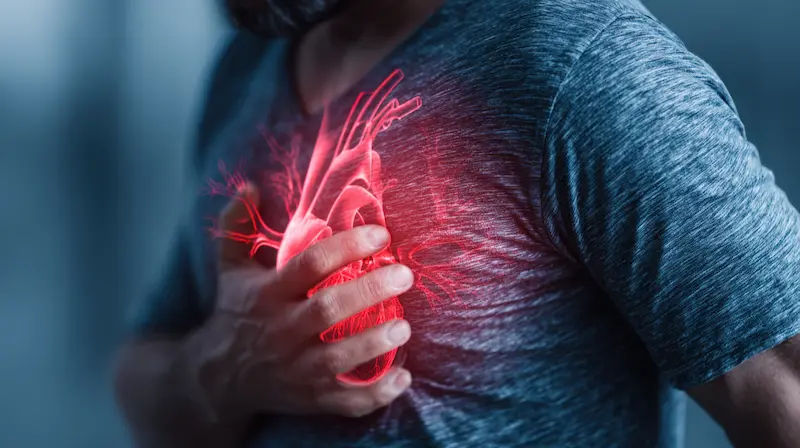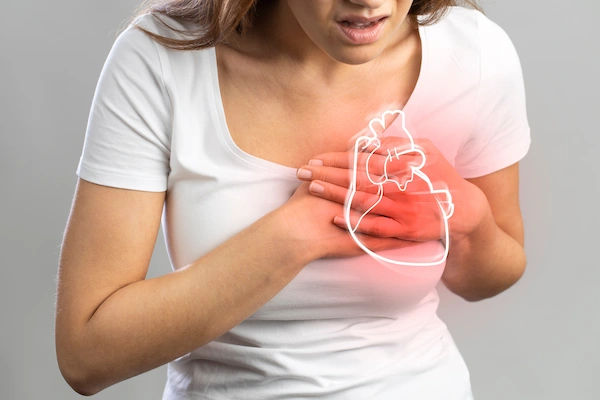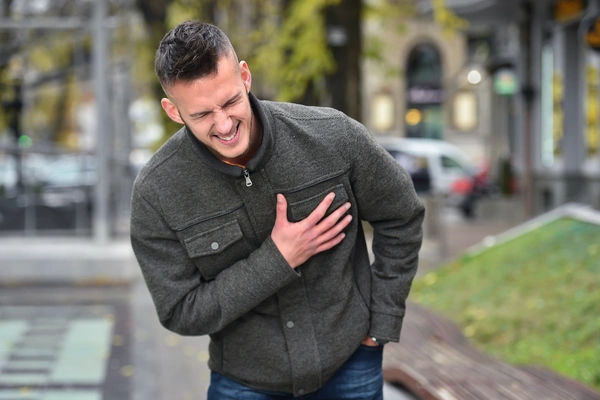Guide to Sudden Cardiac Arrest
Learn the critical difference between a heart attack and sudden cardiac arrest (SCA). Understand the causes, warning signs, and life-saving steps like CPR and AED use. Get the essential guide to prevention and emergency response.

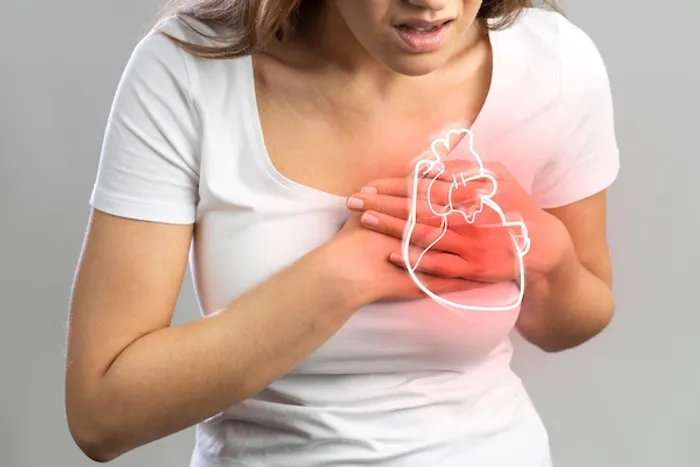
Introduction
Sudden cardiac arrest is a life-threatening emergency that can strike anyone, anywhere, and without warning. It happens when the heart’s electrical system malfunctions, causing the heart to stop pumping blood. Without immediate help, brain damage and death can occur within minutes. This guide is designed for the general public to help you recognize sudden cardiac arrest, take fast, confident action, and understand steps to reduce risk. You’ll learn how sudden cardiac arrest differs from a heart attack, what to do in an emergency, how automated external defibrillators (AEDs) work, and how to support recovery afterward. We also cover risk factors, prevention strategies, and practical advice tailored to real-world situations at home, work, school, and in the community. Throughout, you’ll find evidence-based information, examples, and resources for further support, including how to quickly consult a doctor online if you’re worried about symptoms. If you remember one thing, let it be this: your actions in the first few minutes can double or triple someone’s chances of survival.
What Top-Ranking Pages Cover?
To shape this guide, we reviewed leading resources that rank highly for sudden cardiac arrest:
- American Heart Association (AHA): Clear definitions, “Chain of Survival,” hands-only CPR steps, AED basics, survival data.
- Centers for Disease Control and Prevention (CDC): Risk factors, symptoms, community prevention, and statistics.
- Cleveland Clinic: Detailed causes, diagnosis, and treatment, including ICDs and ablation.
- Mayo Clinic: Practical overview of symptoms, causes, tests, and emergency response.
- NHS (UK): Immediate first-aid steps and public AED guidance.
- National Heart, Lung, and Blood Institute (NHLBI): Mechanisms, risk factors, and research updates.
- Harvard Health: Myths vs facts and prevention-focused lifestyle guidance.
- British Heart Foundation: Public education on defibrillators and recognizing arrest.
- MedlinePlus/NIH pages: Patient-friendly summaries of diagnosis and treatment.
- Johns Hopkins: Athlete screening, inherited risks, and cardiogenetics.
Common structure across these sources:
- Definitions and how sudden cardiac arrest differs from a heart attack
- Risk factors and causes (ventricular fibrillation, coronary artery disease, cardiomyopathies)
- Warning signs vs no-warning scenarios
- Immediate response: call emergency, CPR, AED
- Diagnosis, treatment (ICD), and follow-up care
- Community prevention and AED availability
- Survival statistics and the importance of bystander action
Gaps we aim to fill:
- Practical, step-by-step action you can take right now with realistic scenarios
- Guidance specific to families, workplaces, and schools, including AED access
- Support after survival (mental health, caregiver needs)
- India-specific context (emergency numbers 112/108, Good Samaritan protections, access through Apollo 24|7)
- Simple language with memorable checklists
Consult a Top General Physician
What Is Sudden Cardiac Arrest?
Sudden cardiac arrest (SCA) is the abrupt loss of heart function, breathing, and consciousness due to a malfunction in the heart’s electrical system. The heart typically goes into a chaotic rhythm—most often ventricular fibrillation (VF) or pulseless ventricular tachycardia—so blood stops flowing to the brain and vital organs. Without immediate CPR and defibrillation, SCA is fatal within minutes.
- SCA vs heart attack: A heart attack (myocardial infarction) is a circulation problem caused by a blocked coronary artery; the heart is usually still beating. SCA is an electrical problem where the heart suddenly stops beating effectively. A heart attack can trigger SCA, but many cases of sudden cardiac arrest occur without a preceding heart attack [1–4]. Understanding this difference matters because treatment is different in the moment: SCA requires immediate CPR and an AED, while heart attacks require urgent medical evaluation and artery-opening treatments.
- Scope and impact: In the United States, over 356,000 out-of-hospital sudden cardiac arrests occur each year, and survival to hospital discharge averages around 10%, varying by community and how quickly bystanders respond [1,2]. Most arrests happen at home, which means family members are often the first (and only) chance for help. Communities with more people trained in hands-only CPR and better AED access see higher survival rates.
Related long-tail keywords used: sudden cardiac arrest vs heart attack, ventricular fibrillation cause.
How Sudden Cardiac Arrest Happens?
The heart’s normal rhythm is coordinated by electrical signals that start in the sinoatrial (SA) node, travel through the atria, pause at the atrioventricular (AV) node, and then spread through the ventricles. When this system malfunctions, particularly in the ventricles, it can produce:
Ventricular fibrillation (VF): Chaotic, quivering electrical activity—no effective pumping.
Pulseless ventricular tachycardia (VT): Very fast rhythm that fails to pump blood.
Severe bradycardia or complete heart block: Very slow or absent signals causing collapse.
Common causes and triggers include:
- Coronary artery disease or heart attack: Scar tissue and oxygen deprivation destabilize the heart’s electrical system.
- Cardiomyopathies (e.g., hypertrophic cardiomyopathy in young athletes, dilated cardiomyopathy): Structural changes predispose to dangerous rhythms.
- Inherited channelopathies (e.g., long QT syndrome, Brugada syndrome): Genetic changes affect ion channels, increasing arrhythmia risk.
- Heart failure, valve disease, myocarditis, or severe electrolyte imbalances (e.g., low potassium).
- Drug effects: Certain medications, stimulants, or illicit drugs can provoke arrhythmias.
- Postpartum or pregnancy-related cardiomyopathy in rare cases.
A crucial insight: The “electrical storm” of VF often emerges within seconds, not minutes. That’s why the Chain of Survival emphasizes immediate recognition, calling emergency services, high-quality chest compressions, rapid defibrillation, and post-resuscitation care. Communities that practice these steps and place AEDs in high-traffic areas see significantly better outcomes.
Who Is at Risk?
Sudden cardiac arrest can affect anyone, but certain factors elevate risk:
- Age and sex: Risk increases with age; men have higher rates overall, partly due to earlier coronary artery disease.
- Medical conditions: Coronary artery disease, prior heart attack, heart failure, cardiomyopathy, diabetes, high blood pressure, high cholesterol, chronic kidney disease, and sleep apnea all raise risk.
- Lifestyle: Smoking, heavy alcohol use, stimulant drug use, and extreme dehydration or overheating can trigger arrhythmias.
- Family history: Unexplained fainting, seizures, sudden death at a young age, or known inherited rhythm conditions should prompt evaluation.
- Young athletes: Though rare, sudden death in young athletes is often linked to hypertrophic cardiomyopathy, anomalous coronary arteries, myocarditis, or channelopathies.
India-specific note: Cardiovascular disease occurs at younger ages in South Asian populations compared to many Western countries. Poorly controlled diabetes and hypertension are strong contributors. Screening and aggressive risk-factor management are critically important.
Unique perspective: “Risk stacking” is common. For example, someone with untreated sleep apnea, resistant hypertension, and poorly controlled diabetes may not feel “at risk” but can carry substantial arrhythmic risk, especially during acute illness or medication changes. If you have multiple risk factors, ask your doctor about a personalized plan to minimize sudden cardiac arrest risk. Apollo 24|7 offers a convenient home collection for tests like HbA1c, lipid profile, and thyroid function that can help assess and manage cardiovascular risk.
Warning Signs Before Sudden Cardiac Arrest
While sudden cardiac arrest can strike without warning, many people have symptoms in the minutes to days prior:
- Unexplained fainting (syncope) or near-fainting, especially during exercise or strong emotions
- Palpitations (heart racing or fluttering), irregular heartbeat, or skipped beats
- Chest discomfort, pressure, or pain—especially if radiating to the arm, neck, jaw, or back
- Shortness of breath, unusual fatigue, or reduced exercise tolerance
- Dizziness or lightheadedness
In children and young adults, red flags include fainting during sports, seizures not explained by neurology, and a family history of sudden, unexplained death. If such symptoms occur, do not wait. Seek urgent medical evaluation, especially if symptoms are new, severe, or recurrent. If someone collapses and is unresponsive with no normal breathing, assume sudden cardiac arrest and act immediately—call emergency services and start CPR.
- Pro tip: People often brush off “just palpitations” or “just fatigue.” A practical rule is the 3S check—Sudden, Severe, Situational. If symptoms are sudden and severe, or if they occur with exertion or strong emotion (situational), get checked promptly. If symptoms persist beyond two weeks or keep recurring, consult a doctor online with Apollo 24|7 for further evaluation.
Emergency Response: What To Do Right Now?
In sudden cardiac arrest, every minute without CPR reduces survival by 7–10%. Bystander action can double or triple survival before EMS arrives. Here’s what to do:
1) Check
- Ensure the scene is safe.
- Tap and shout: “Are you okay?” Look for normal breathing (gasping is not normal breathing).
- If no response and no normal breathing, this is likely sudden cardiac arrest.
2) Call
- Call your local emergency number immediately. In India, dial 112 (general) or 108 (ambulance) depending on your state’s system.
- Put your phone on speaker so you can start CPR while speaking to the dispatcher.
3) Compress (Hands-Only CPR)
- Place the heel of one hand at the center of the chest, the other hand on top.
- Push hard and fast at a rate of 100–120 compressions per minute, about 5–6 cm deep in adults.
- Let the chest fully recoil after each compression.
- Don’t stop until an AED is ready to use or professional help takes over. If you tire, switch with another bystander every 2 minutes.
4) AED
- Send someone to retrieve the nearest AED. If alone and an AED is immediately accessible, use it quickly.
- Turn the AED on and follow the voice prompts. Attach pads to the bare chest as shown.
- If the AED advises a shock, clear everyone from the victim and press the shock button.
- Immediately resume compressions for 2 minutes before the device re-analyzes.
Real-world example: Communities that train residents in hands-only CPR and place AEDs in public areas (airports, malls, gyms) report markedly higher survival, especially when the first shock is delivered within 3–5 minutes [1,5]. High-rise buildings can benefit from floor-specific AEDs and emergency drills.
- Unique insight: “Good Samaritan” protections in many regions shield bystanders who act in good faith. Perfection isn’t required—action is. Your chest compressions and early defibrillation are the game changers.
AEDs: How They Work and Where to Find Them?
An automated external defibrillator (AED) analyzes the heart rhythm and, if needed, delivers a controlled electric shock to reset the heart’s electrical system. Modern AEDs are designed for laypersons:
They give voice and visual prompts.
- They won’t shock unless a shockable rhythm (VF/VT) is detected.
- Pads show clear placement diagrams, and pediatric pads/cardiac arrest modes exist for children.
Where to find AEDs:
- Airports, train stations, malls, gyms, stadiums, offices, hotels, schools, and gated communities.
- Ask your building management or HR where the nearest AED is.
- Use smartphone tools and apps that map AED locations; some local EMS systems maintain registries.
Tips for use:
- Shave or dry very wet/chest-hair areas only if it significantly affects pad adhesion—don’t delay for long.
- Remove medication patches and wipe the area before pad placement.
- For implanted devices (e.g., a pacemaker/ICD bulge under skin), place pads at least an inch away.
India-specific note: Encourage workplaces and housing societies to install AEDs and train staff. Conduct drills. If your organization needs setup guidance, consult local health authorities or hospital partners.
Diagnosis After Survival and Evaluation
If someone survives sudden cardiac arrest, the next steps are to find the cause and reduce future risk. Hospital teams will typically perform:
- ECG and continuous cardiac monitoring to look for ischemia or arrhythmias.
- Blood tests including troponin (heart injury), electrolytes, thyroid function, and toxicology as indicated.
- Echocardiogram to assess heart structure and function.
- Coronary angiography if a heart attack is suspected.
- Cardiac MRI for detailed assessment of scarring, myocarditis, and cardiomyopathies.
- Electrophysiology study (EPS) in selected cases to map abnormal circuits.
- Genetic testing and family screening when inherited conditions are suspected (long QT, Brugada, hypertrophic cardiomyopathy).
Follow-up may include wearable monitors or implantable loop recorders to capture intermittent arrhythmias. Family members may be offered ECGs, echocardiograms, or genetic testing depending on the suspected diagnosis. If you or a relative has had unexplained fainting or a concerning family history, book a physical visit to a doctor with Apollo 24|7 or consult online for guidance on appropriate screening. Apollo 24|7 also offers home collections for labs like HbA1c, lipid profile, electrolytes, and thyroid tests that inform overall cardiac risk.
Treatment and Prevention Options
Treatment plans target the underlying cause and future risk reduction:
- Implantable cardioverter-defibrillator (ICD): The most effective protection for survivors at continued risk. An ICD monitors heart rhythm and delivers shocks or pacing to stop dangerous arrhythmias.
- Medications: Beta-blockers, antiarrhythmics, and ACE inhibitors/ARNIs for heart failure. In inherited channelopathies (e.g., long QT), specific regimens reduce risk.
- Catheter ablation: For certain ventricular tachycardias arising from identifiable circuits or scar tissue, ablation can reduce arrhythmic burden.
- Revascularization: If coronary artery disease is the trigger, angioplasty/stenting or bypass surgery lowers future risk of arrhythmias and heart damage.
- Lifestyle and risk-factor control: Stop smoking, manage diabetes, control blood pressure and cholesterol, treat sleep apnea, and limit alcohol. Cardiac rehab optimizes fitness and safety.
- Special devices: Wearable defibrillators in select temporary high-risk periods.
Unique perspective: Think of prevention in layers—Electrical (ICD/ablation), Structural (revascularization, managing cardiomyopathy), Metabolic (diabetes, lipids, thyroid), and Behavioral (sleep, fitness, triggers). The strongest results often come from combining layers.
Life After Sudden Cardiac Arrest
Recovery is more than physical healing. Survivors and families commonly experience anxiety, depression, memory gaps, or post-traumatic stress. Practical steps:
- Cardiac rehabilitation: Supervised exercise and education improve fitness, confidence, and quality of life.
- Medication adherence and device follow-up: Keep ICD checks and remote monitoring on schedule.
- Gradual return to work and driving: Follow cardiology guidance and local regulations.
- Mental health support: Counseling, peer groups, and caregiver support matter. It’s normal to feel fear—talk about it.
- Safety planning: Family CPR training, knowing where AEDs are at home and work, and maintaining an updated medication/device card.
Caregiver note: Caregivers can experience burnout and hypervigilance. Your well-being affects recovery, too—seek support and respite.
If your condition does not improve after following medical advice, or if anxiety or sleep problems persist, consult a doctor online with Apollo 24|7 for further evaluation and support.
Prevention for Individuals and Communities
Individual prevention:
- Understand your numbers: blood pressure, HbA1c, lipids, BMI, and sleep apnea risk.
- Exercise regularly, eat a heart-healthy diet, quit smoking, moderate alcohol, and manage stress.
- Review medications with your doctor for QT-prolonging or pro-arrhythmic effects.
- Family screening was indicated for inherited conditions.
Community prevention:
- Train as many people as possible in hands-only CPR.
- Place AEDs in high-traffic locations and register them with local EMS.
- Conduct drills at schools, offices, and residential complexes.
- Encourage Good Samaritan awareness; post emergency numbers visibly (India: 112/108).
Unique insight: AEDs are most effective when placed within a 3-minute brisk walk of any point in a building. For high-rise apartments, that often means one AED per several floors, not just in the lobby.
Special Situations: Children, Teens, Pregnancy
Children and teens:
- Causes differ slightly: congenital heart disease, myocarditis, inherited channelopathies, and cardiomyopathies are more common drivers than coronary disease.
- Warning signs include fainting during exercise, seizures without neurologic cause, and family history of sudden death.
- AEDs can be used in children; pediatric pads or settings are preferred, but if unavailable, standard pads are acceptable—follow prompts.
Pregnancy and postpartum:
- Rarely, peripartum cardiomyopathy or severe preeclampsia can raise arrhythmic risk.
- Care requires a multidisciplinary team to optimize maternal and fetal outcomes.
- If you are pregnant with concerning symptoms (fainting, palpitations, chest pain), seek immediate care.
Athletes:
Pre-participation screening helps, but it doesn’t catch every case. If an athlete collapses, treat it as sudden cardiac arrest: call, CPR, AED—seconds count.
Myths vs Facts
- Myth: “They’re just sleeping or have fainted; CPR could hurt them.” Fact: If they’re unresponsive and not breathing normally, start CPR. You’re unlikely to cause serious harm, and you might save a life.
- Myth: “I could be sued if I do CPR wrong.” Fact: Good Samaritan laws in many regions protect well-intentioned bystanders.
- Myth: “AEDs are complicated.” Fact: They are designed for laypeople with step-by-step voice prompts; they won’t shock unless needed.
- Myth: “Heart attacks and sudden cardiac arrest are the same.” Fact: They’re different emergencies and need different immediate responses.
- Myth: “Young, fit people can’t have sudden cardiac arrest.” Fact: Rare but possible, especially with certain inherited or structural conditions.
When to See a Doctor (and How Apollo 24|7 Can Help)?
Seek urgent medical care if you or a loved one experiences:
- Fainting during exercise or strong emotions
- Palpitations with chest pain, shortness of breath, or dizziness
- Unexplained seizures or a family history of sudden, unexplained death
- New or worsening chest discomfort, especially with exertion
If symptoms persist beyond two weeks or keep recurring, consult a doctor online with Apollo 24|7 for further evaluation. For preventive screening and risk reduction, Apollo 24|7 offers a convenient home collection for tests like HbA1c, lipid profile, thyroid function, and vitamin D, and can help you book ECGs or echocardiograms at partner centers. If your condition does not improve after trying these measures, book a physical visit to a doctor with Apollo 24|7.
Costs, Access, and Resources in India
- Emergency numbers: 112 (all emergencies), 108 (ambulances in many states). Save them in your phone and post them at home and work.
- AED access: Encourage employers and societies to install AEDs. Bulk purchasing and shared community models can reduce costs.
- Training: Local hospitals and NGOs often provide CPR/AED training sessions for communities, schools, and workplaces.
- Follow-up care: Leverage telemedicine for medication titration, device check coordination, and mental health support.
- Financial planning: Explore insurance coverage for ICDs and procedures; many policies cover device implantation for medically indicated cases.
Conclusion
Sudden cardiac arrest is one of the most time-critical emergencies in medicine—but it’s also a problem where ordinary people can become lifesavers. By recognizing the signs, calling emergency services immediately, starting hands-only CPR, and using an AED as soon as possible, you can dramatically change the outcome for a family member, colleague, or stranger. Beyond the emergency, understanding your personal risk, acting on warning symptoms, and following through with testing and prevention—whether that’s managing diabetes and blood pressure or discussing an ICD—can reduce the chance of future events. Communities that normalize CPR training and place AEDs in the places people actually gather see the best survival rates. Make a plan today: learn CPR, locate the nearest AED, and talk to your doctor about your heart health. If you have symptoms or questions about your risk, consult a doctor online with Apollo 24|7 or book a physical visit to create a personalized prevention and care plan. Your readiness could save a life—perhaps even your own.
Consult a Top General Physician
Consult a Top General Physician
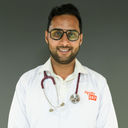
Dr. Syed Ismail Ali
General Practitioner
7 Years • MBBS
Hyderabad
Apollo 24|7 Clinic, Hyderabad

Dr. Vivek D
General Physician
4 Years • MBBS
Bengaluru
PRESTIGE SHANTHINIKETAN - SOCIETY CLINIC, Bengaluru

Dr. Anand Ravi
General Physician
2 Years • MBBS
Bengaluru
PRESTIGE SHANTHINIKETAN - SOCIETY CLINIC, Bengaluru
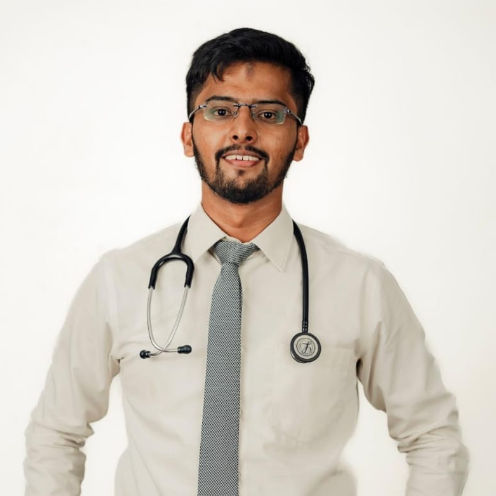
Dr Syed Mateen Pasha
General Physician
2 Years • MBBS
Bengaluru
PRESTIGE SHANTHINIKETAN - SOCIETY CLINIC, Bengaluru

Dr. Harshendra Jaiswal
General Physician/ Internal Medicine Specialist
12 Years • MBBS , MD (General medicine)
Kolkata
108 DHANA DHANVANTARI Clinic, Kolkata
(25+ Patients)
Consult a Top General Physician

Dr. Syed Ismail Ali
General Practitioner
7 Years • MBBS
Hyderabad
Apollo 24|7 Clinic, Hyderabad

Dr. Vivek D
General Physician
4 Years • MBBS
Bengaluru
PRESTIGE SHANTHINIKETAN - SOCIETY CLINIC, Bengaluru

Dr. Anand Ravi
General Physician
2 Years • MBBS
Bengaluru
PRESTIGE SHANTHINIKETAN - SOCIETY CLINIC, Bengaluru

Dr Syed Mateen Pasha
General Physician
2 Years • MBBS
Bengaluru
PRESTIGE SHANTHINIKETAN - SOCIETY CLINIC, Bengaluru

Dr. Harshendra Jaiswal
General Physician/ Internal Medicine Specialist
12 Years • MBBS , MD (General medicine)
Kolkata
108 DHANA DHANVANTARI Clinic, Kolkata
(25+ Patients)
More articles from Heart Attack
Frequently Asked Questions
What is the difference between sudden cardiac arrest and a heart attack?
A heart attack is a blocked artery problem; the heart usually keeps beating. Sudden cardiac arrest is an electrical problem where the heart stops pumping effectively. Both are emergencies, but cardiac arrest needs immediate CPR and an AED.
What are the early warning signs of sudden cardiac arrest?
Some people have fainting, palpitations, chest discomfort, shortness of breath, or unusual fatigue minutes to days before. If these symptoms persist or recur, consult a doctor online with Apollo 24|7.
How do I perform hands-only CPR?
If someone is unresponsive and not breathing normally, call emergency services, place your hands in the center of the chest, and push hard and fast at 100–120 compressions per minute, at least 5 cm deep, letting the chest recoil. Don’t stop until help arrives or an AED is ready.
Can anyone use an AED?
Yes. AEDs provide voice prompts and won’t deliver a shock unless needed. Place pads as shown and follow instructions. Using an AED quickly in sudden cardiac arrest can restore a normal rhythm.
Who should be screened for sudden cardiac arrest risk?
People with fainting during exercise, palpitations with dizziness, a family history of sudden death, or known heart conditions should be evaluated. Depending on your risk, tests may include ECG, echocardiogram, and sometimes genetic testing. Apollo 24|7 offers home collection for risk-related labs like HbA1c and lipid profile.
_0.webp)
